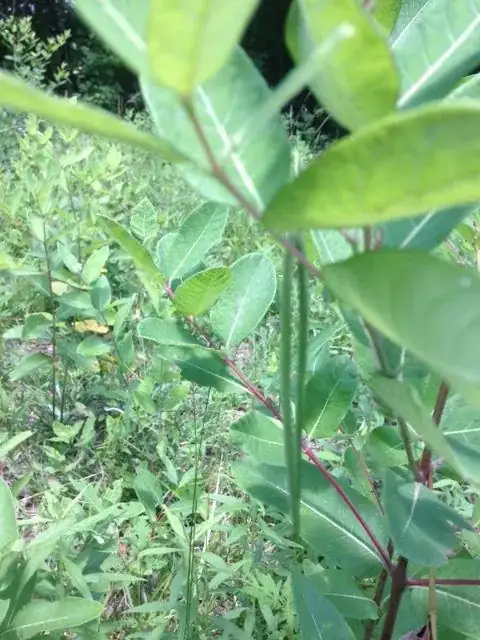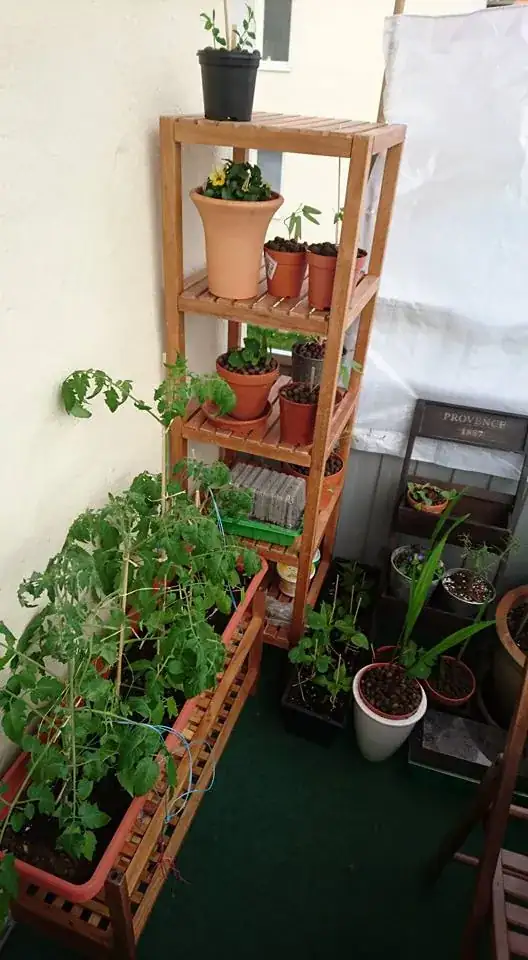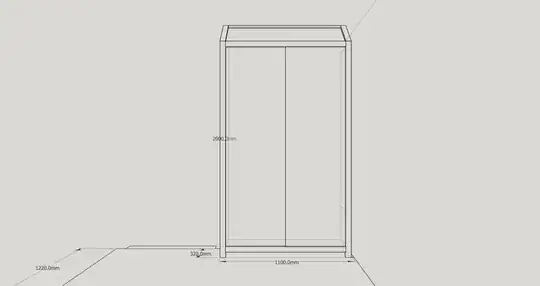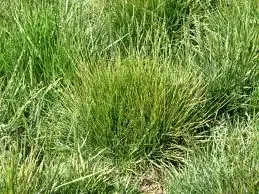I have a couple of suggestions to consider. One thing to think about is that 320mm. That's not as wide as it seems. Some of those plants, such as the tomatoes and peppers can get large. I suppose you can keep them pruned back, but they'll probably still touch the sides of the container and there can be a significant difference in temp between the interior and right up against the outer walls. I think you could easily grow herbs in this size container, but you might need to make it larger for some of the plants you want.
I don't think it really matters what material you build it out of, because you should coat it in some kind of sealant. I don't know if you have similar approximations over there, but I'd seal the frame and back with something like pond sealant or a garage floor finish. It'll make it last much longer as well as giving you a darker color to help absorb heat. To help combat temp loss, I'd suggest having all the walls insulated. You can do this with high density foam in the rear wall and the side walls if they aren't going to be clear to let light in. You could also just stuff it with newspaper and get some decent insulation value.
I would probably build it out of 2"x2" (50mm x 50mm), which is just about perfect for adding the HDF and putting panels on either side. Our local supply store even sells the textured plastic 4'x8' (1.2m x 2.4m) sheets of textured plastic. Typically you see it used as the lower walls in fast food restaurants, because it's easy to clean. You could use this inside the green house to so it doesn't matter if it gets wet or not. I would use the double walled poly carbonate where you want light to come through. It adds extra insulation value.
Based on an idea another user suggested, I do have a modification that might help. They suggested using PVC to build the frame. This isn't a bad idea. The only issue is that it can degrade and become brittle in sunlight, but a coat of paint will help with that. My idea was to paint the frame black and fill it with sand. The black pipe will absorb more heat and hopefully transfer it to the sand as a heat sink through the night. I've never attempted that, but it popped into my head and seemed like a good idea, worth trying.
Other alternatives to help heat a greenhouse like this without power are to make a solar heater. You can look up instructions on youtube.com, but basically you build a shallow box with a clear front. You stack soda cans you painted black and punched holes in the bottom of, in rows. The theory is that the light comes through the glass and heats the cans, that heats the air in the cans, and you can rig a computer fan and thermostat to pull that air through into the greenhouse when the temp drops. You will be able to easily overheat this greenhouse as well, so be careful. You'd be surprised how hot one can get even on a really cold day.
Another alternative that is relatively cheap is a clay pot and saucer with a tea candle. Again, I've never used it, but I understand it can put out a significant amount of heat. People set the saucer down and light a tea candle on it. Then they put the pot upside down over it. The candle heats the pot and the pot radiates the heat. You could put more candles in one or find some way to rig it to light a new candle when the old one burns out. I'm sure you could devise a way to have one candle light the next as it burns low. I hear they're super cheap and you can use them to heat a small greenhouse through the winter. Enough to keep vegetables from dying. Probably wouldn't work for orchids or anything.
Lastly, you need to consider air flow. Your plants will mildew and rot without air flow. You should install a couple of small computer or desktop fans and wire them to a solar panel. We can get small ones here, fairly cheaply, from discount tool stores like Harbor Freight. They would probably power a couple of these fans and you can have them orientated to circulate the air.
Good luck and I hope this gave you a few ideas. Sorry about what's probably a horrible metric conversion on my part. :))





